As far as FIG events are concerned, women’s individual floor exercise was first introduced at the 1950 World Championships, but at the time, gymnasts did not use floor music. In fact, at the 1950 FIG Congress, the delegates had to decide if gymnasts should perform to music at the 1952 Olympics, and they voted against it (eight votes to three).
It wasn’t until 1958 that music was introduced for individual floor routines, both compulsory and optional.
Below, you’ll find recordings of the music for the compulsory routines from 1958 until 1996. For some of you, the music will bring back fond memories. For others, it’ll bring back nightmares. But hopefully, you’ll find a piece you enjoy listening to.
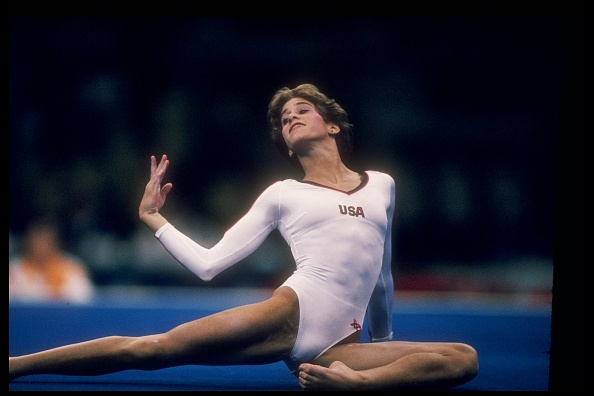
1958 World Championships
Music by: Hans Dokoupil
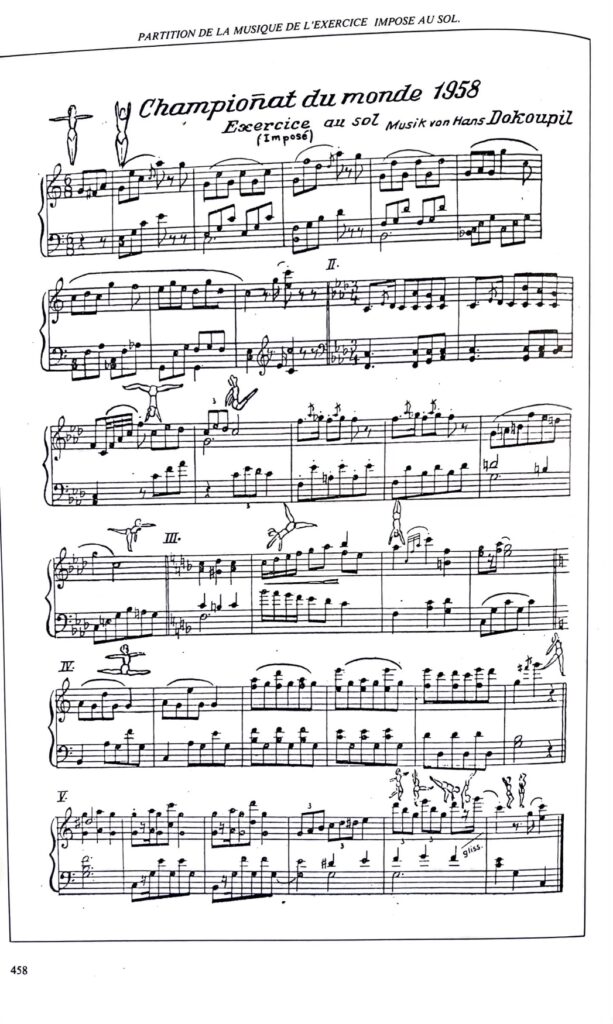
1960 Olympic Games
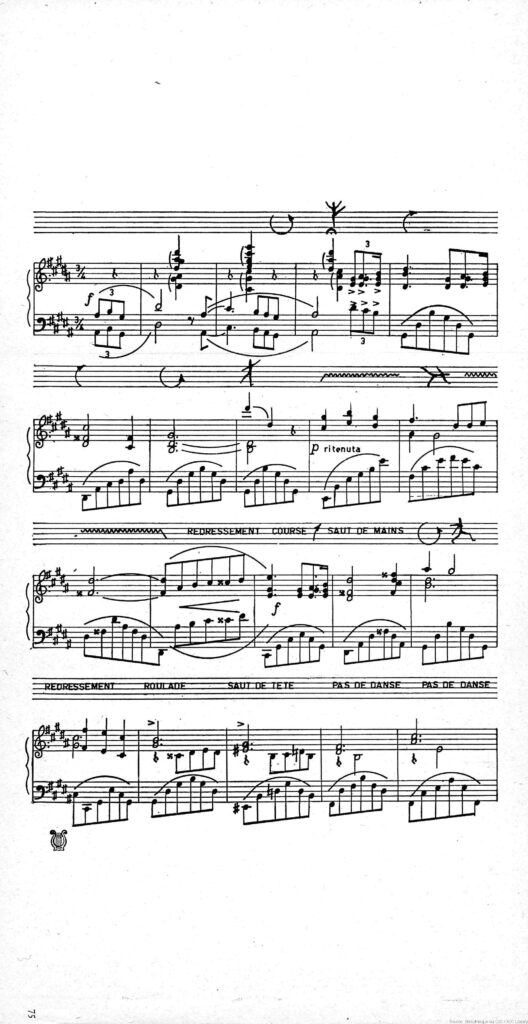
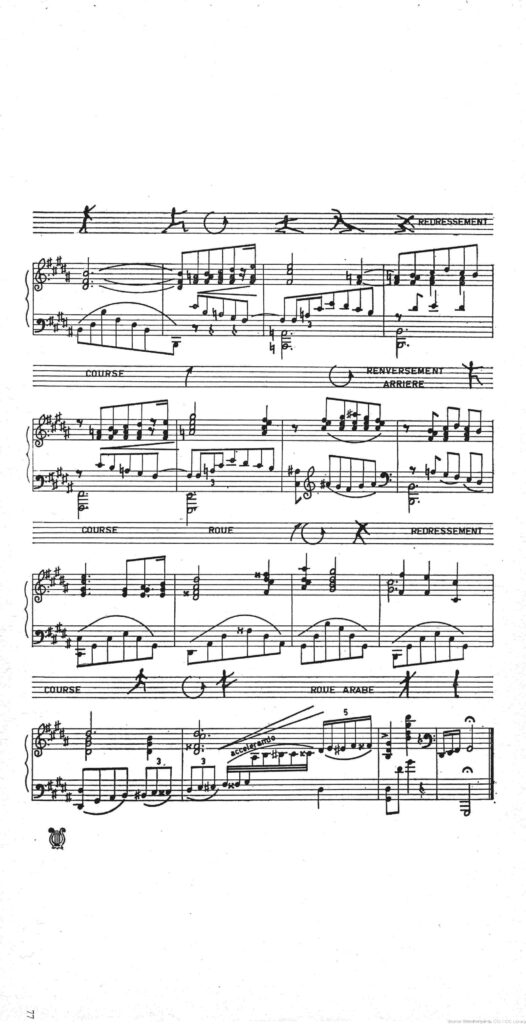
1962 World Championships
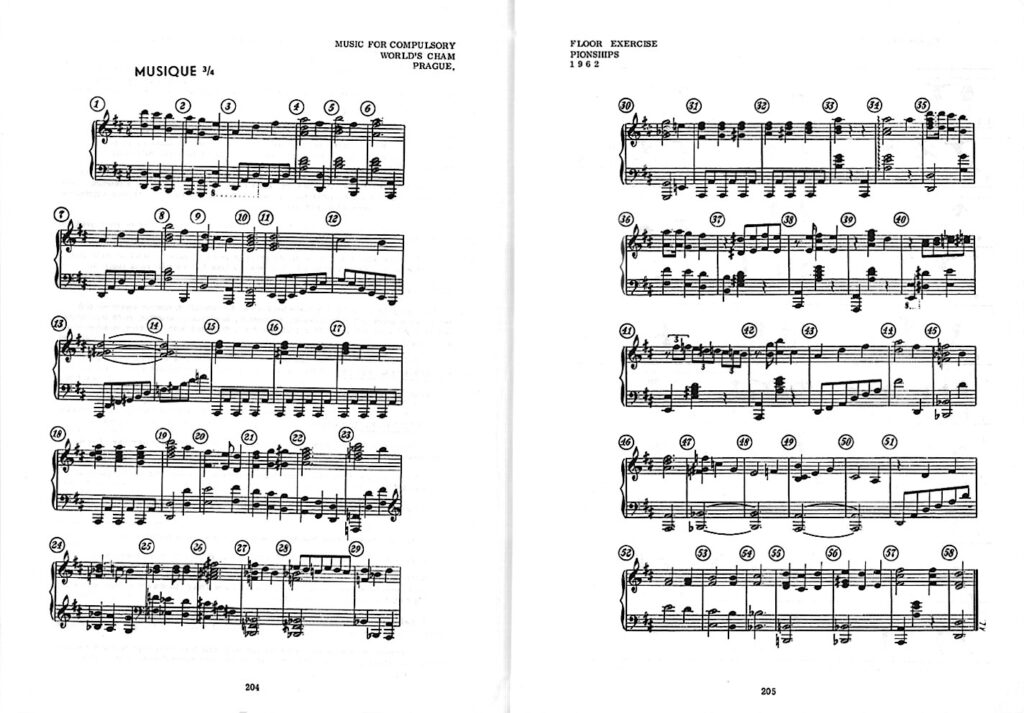
1964 Olympic Games
Music by: Andreina Gotta
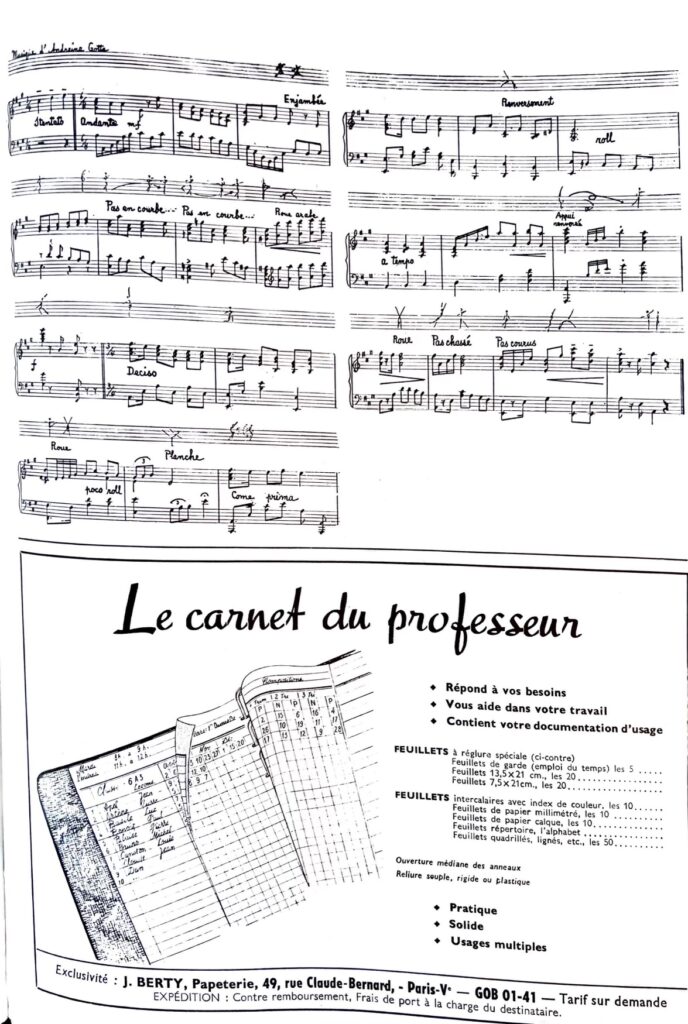
1966 World Championships
Music by: Andreina Gotta
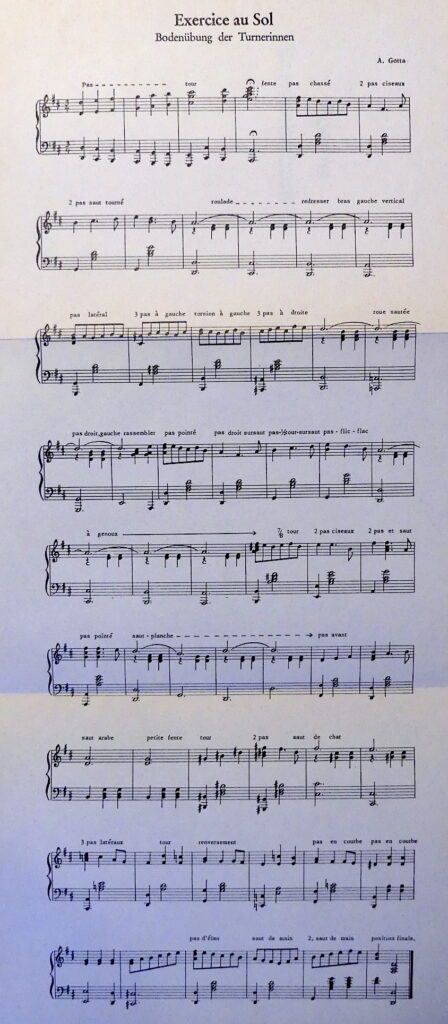
1968 Olympic Games
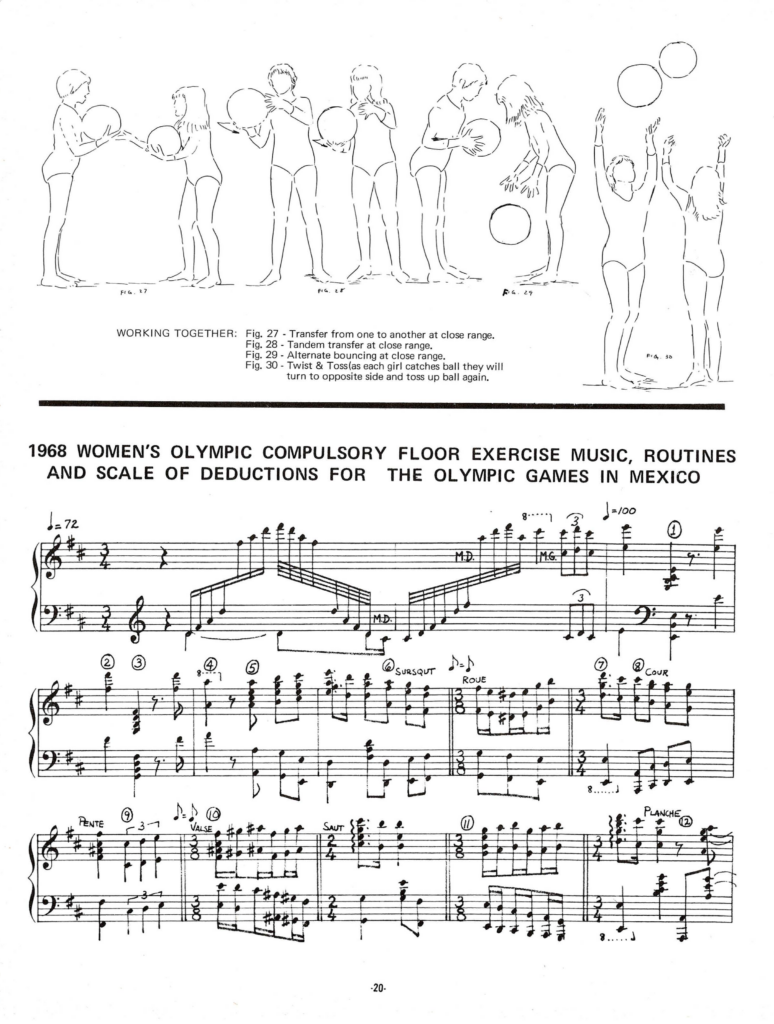
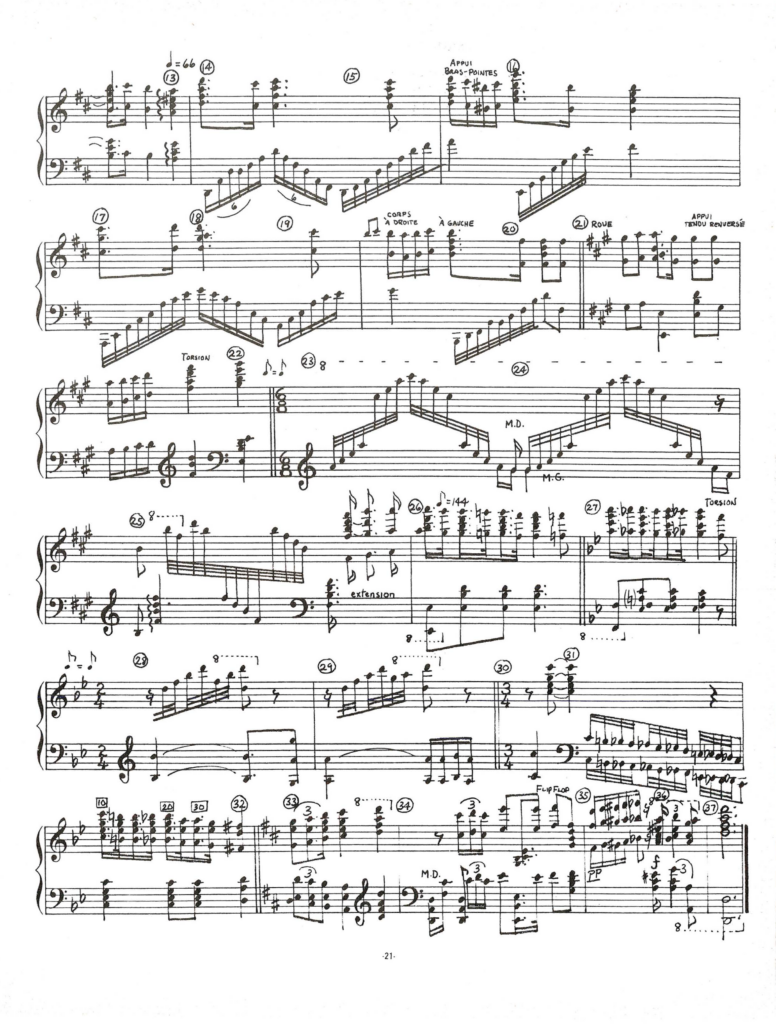
1970 World Championships
Musical Arrangement by: Julia Brumgart
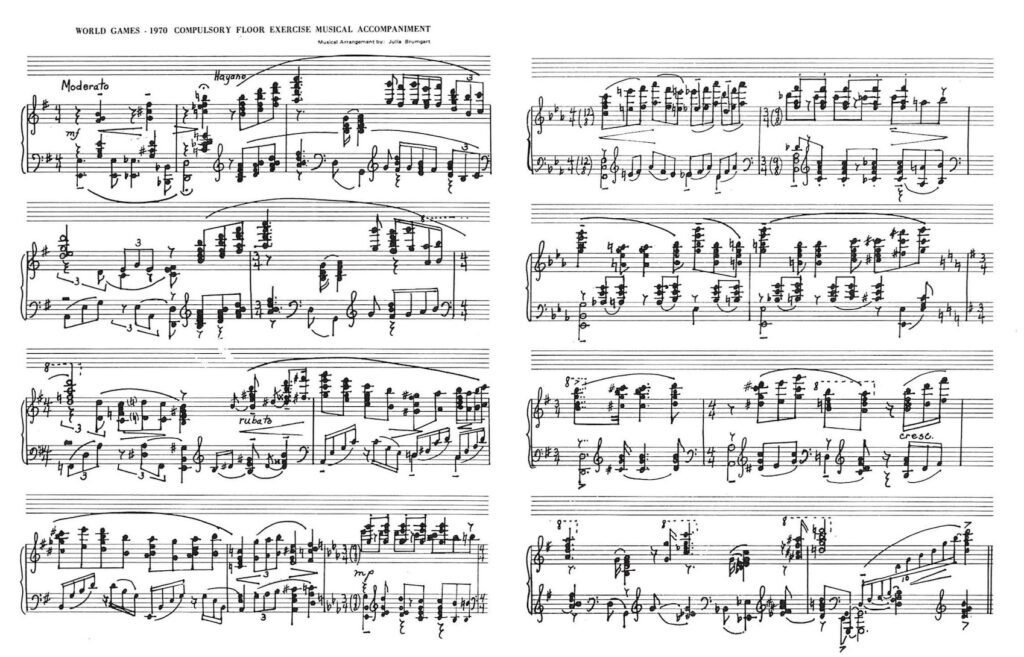
1972 Olympic Games
In 1972, the FIG allowed each nation to choose its own floor music for the compulsory routines. From the rulebook:
The total composition of the exercises, the musical accompaniment for the floor exercise, will be elaborated by the technicians of each Federation.
The musical accompaniment will be identical for all the gymnasts of a team.
La composition totale des exercices, l’accompagnement musical pour l’exercice au sol, seront élaborés par les techniciennes de chaque Fédération.
L’accompagnement musical sera identique pour toutes les gymnastes d’une équipe.
1976 Olympic Games
Music by: Carol Stabisewschi (Stabisevski)
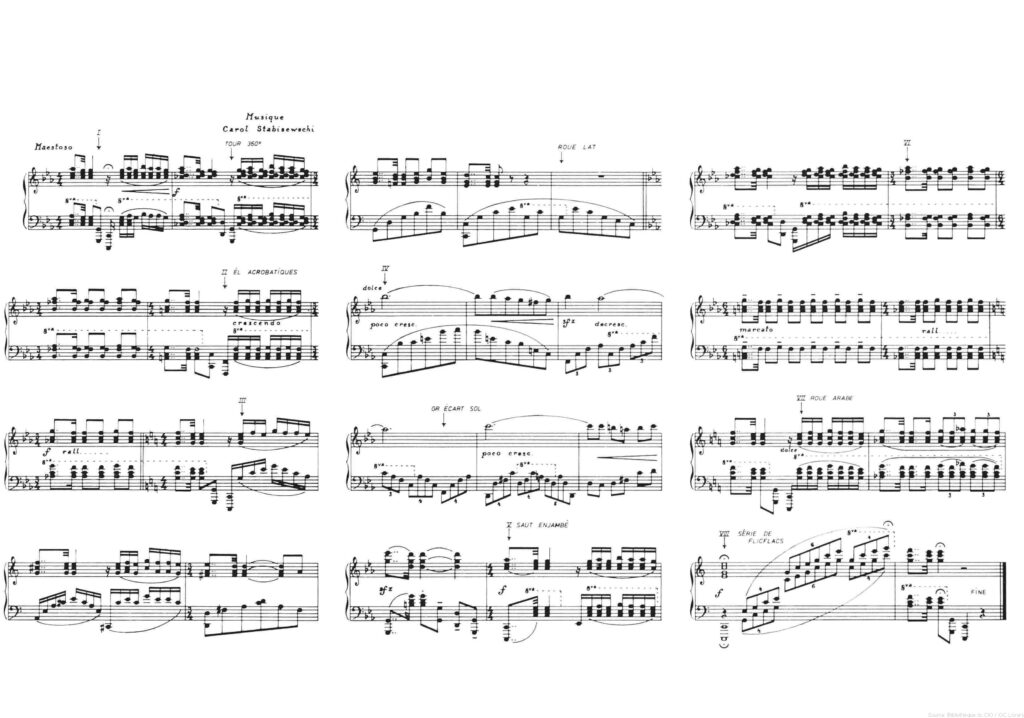
1980 Olympic Games
In 1980, there was one routine but three options for floor music. Each country had to choose one of the following pieces of music.
Option 1:
Option 2:
Option 3 — Composer: Carol Stabisevski
Who said choreography needed to be specific to the piece of music? 🙂
Note: The other two composers were E. Vevrik and Takiura Yukio, but I don’t know for sure whose composition is whose.
1984 Olympic Games
While pianos were provided in the arenas, cassette tapes were gaining traction. Here’s what the 1984 rulebook said:
Two pianos and the necessary equipment for broadcasting music recorded on tape or cassette will be available; records will not be permitted. All gymnasts using music recorded on tapes or cassettes shall provide a copy to the designated sound technician as soon as they arrive in Los Angeles so that a duplicate recording may be made.
1984 Rulebook for the Olympic Games
Music by: Carol Stabisevski
Note: Stabisevski was the Romanian team’s pianist in the mid-1970s until he defected to the United States.
1988 Olympic Games
In 1988, gymnasts could once again use cassettes.
Two pianos and the necessary equipment for broadcasting music recorded on cassette will be available; reel tapes and records will not be permitted.
1988 Rulebook for the Olympic Games
1992 Olympic Games
For the 1989-1992 quad, the FIG abandoned piano music, opting to use a full symphony recording rather than piano music.
Title: Violin Concerto No. 2 in B Minor
Composer: Niccolò Paganini
1996 Olympic Games
Title: Die Fledermaus
Composer: Johann Strauss
Notes
Note #1: Keep in mind that my recordings are played straight through. They do not necessarily match the tempo of the individual skills in the routines.
The beauty of live music was the pianist’s ability to match the tempo and dynamics to the individual gymnast’s movements. For example, if a gymnast had great extension and flexibility, the pianist could hold a note longer, allowing the gymnast to lift her leg just a little higher and show off her flexibility.
Some of the pianists also added little flourishes — an arpeggio here or a trill there.
Note #2: I am not a professional musician. More than anything, these recordings give you an idea of what the music sounded like. If anyone would like to play better renditions of the pieces above, I’d love to include them in this post. Alternatively, if anyone has digitized the cassette recordings, please let me know.
9 replies on “1958-1996: Compulsory Floor Music over the Decades”
Love this so much. What a great historical article. 1976 to 1988 are seared into my memory!
You have done an incredible job with all of these! I honestly never thought I’d see the day where there were such good versions of these online. Thank you!
Thank you!
Fantastic Work !
92 music is such good !
I just can’t get enough watching compulsories 88 , 92 and 96 !! Can’t chose my favorite one!
You’ve made my day. I never thought I’d find a clean copy of the 1980 compulsory music, no less the sheet music. The version the Soviets and East Germans used is my favorite.
Well done and we’ll played! 🎶
Do you know how the 1972 create your own composition played out? I’m guessing not so great since they didn’t do it again.
The “choose-your-own-composition” strategy was part of a larger compulsory experiment. The WTC gave the national federations a list of compulsory skills and the order in which those skills should appear, but ultimately, the composition of the routines was up to each national federation. The WTC quickly abandoned the experiment. You can read about it here.
It may be worth pointing out that the 1992 compulsory music is a combination of the first and third movements of the Paganini; listeners who want to compare the full work won’t find all of the bits used unless they listen to both movements.
I also find it interesting that the chunks used in the 1992 music are put together a little bit out of order. The result is a piece that still flows well musically (unlike many floor edits I could name), but the 1996 compulsory did not skip around like that and it makes me wonder – if compulsories and fully orchestrated, non-purpose-composed music had co-existed for more Olympic cycles, would we have ever seen a piece edited to be out of order again?
Superbe travail, respect….
allez vous mettre les musiques sol JO 1980
Encore un grand merci